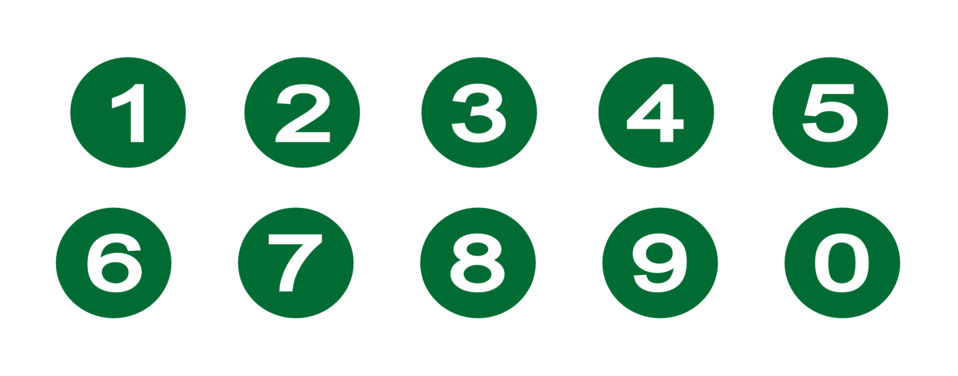-
4-minute read
-
28th April 2019
How to Use Cardinal and Ordinal Numbers
Did you know there are different types of numbers? Two common examples are cardinal numbers and ordinal numbers. Even if you don’t know what these terms mean yet, you probably use both in your writing all the time. So let’s take a look at how to use them correctly.
Cardinal Numbers (Numbers for Counting)
Cardinal numbers are the numbers we count with and probably what you think of first when you hear the word ‘number’. For example, one, two and three are all cardinal numbers.

You can write these numbers as either words (e.g. eight) or numerals (e.g. 8). Typically, in formal writing, you should write numbers up to ten as words and use numerals for larger values. However, different style guides have different rules on this, so make sure to check yours if you have one.
Ordinal Numbers (Numbers for Ranking)
Ordinal numbers are used to rank or order things (e.g. first, second, third). This could include a place in a race or competition, or it could simply be the day of the month (e.g. 1st of December).
Let’s take a look at the first few ordinal numbers to see how they work:
- First (1st)
- Second (2nd)
- Third (3rd)
- Fourth (4th)
- Fifth (5th)
- Sixth (6th)
- Seventh (7th)
- Eighth (8th)
- Ninth (9th)
- Tenth (10th)
How to Write Ordinal Numbers
You’ll notice above that writing an ordinal number as a numeral involves adding the last two letters from the word (e.g. fourth = 4th). To know which letters to add, follow this guideline:
Find this useful?
Subscribe to our newsletter and get writing tips from our editors straight to your inbox.
Subscribe to Beyond the Margins and get your monthly fix of editorial strategy, workflow tips, and real-world examples from content leaders.
- Add ‘st’ if the numeral ends in 1 (e.g., twenty-first = 21st)
- Add ‘nd’ if the numeral ends in 2 (e.g., thirty-second = 32nd)
- Add ‘rd’ if the numeral ends in 3 (e.g., forty-third = 43rd)
- Add ‘th’ if the numeral ends in 4, 5, 6, 7, 8, 9, or 0 (e.g., fifty-sixth = 56th)
The only exceptions are ‘eleventh’ (11th), ‘twelfth’ (12th) and ‘thirteenth’ (13th). In addition, any numeral that ends 11, 12 or 13 will end ‘th’ when written as an ordinal number (e.g. 113th).
We also have a few tips about writing ordinal numbers in different situations:
- Most ordinal numbers are written as words when part of a sentence, especially in formal writing, but larger values can be written as numerals.
- Letters at the end of an ordinal numeral are often written in superscript, as shown above, but this is optional (e.g. you could write either 1st or 1st).
- Written as words, you can add ‘-ly’ to ordinal numbers (e.g. firstly or secondly). This is common when setting out steps in a process, but you should avoid ‘-ly’ endings with ordinal numbers over nine.
Nominal Numbers (Numbers That Aren’t Numbers)
You may also hear people mention ‘nominal’ numbers. These include things like phone numbers, barcodes and the numbers of the back of football players’ shirts: i.e. numbers that name or identify something. Nominal numbers are almost always written as numerals.

(U.S. Air Force photo/Master Sgt. Matt Summers)
Summary: Cardinal and Ordinal Numbers
We can sum up cardinal and ordinal numbers as follows:
- We use cardinal numbers to count (e.g. one, two, three). Typically, in formal writing, you will need to write out numbers up to ten as words and use numerals for larger values.
- We use ordinal numbers to rank or order things (e.g. first, second, third). In formal writing, you should write smaller ordinal numbers as words, but you can use numerals for larger values.
And if you need help checking you’ve used numbers correctly in your written work, get in touch with Proofed today.